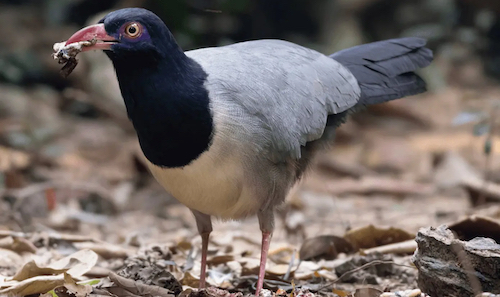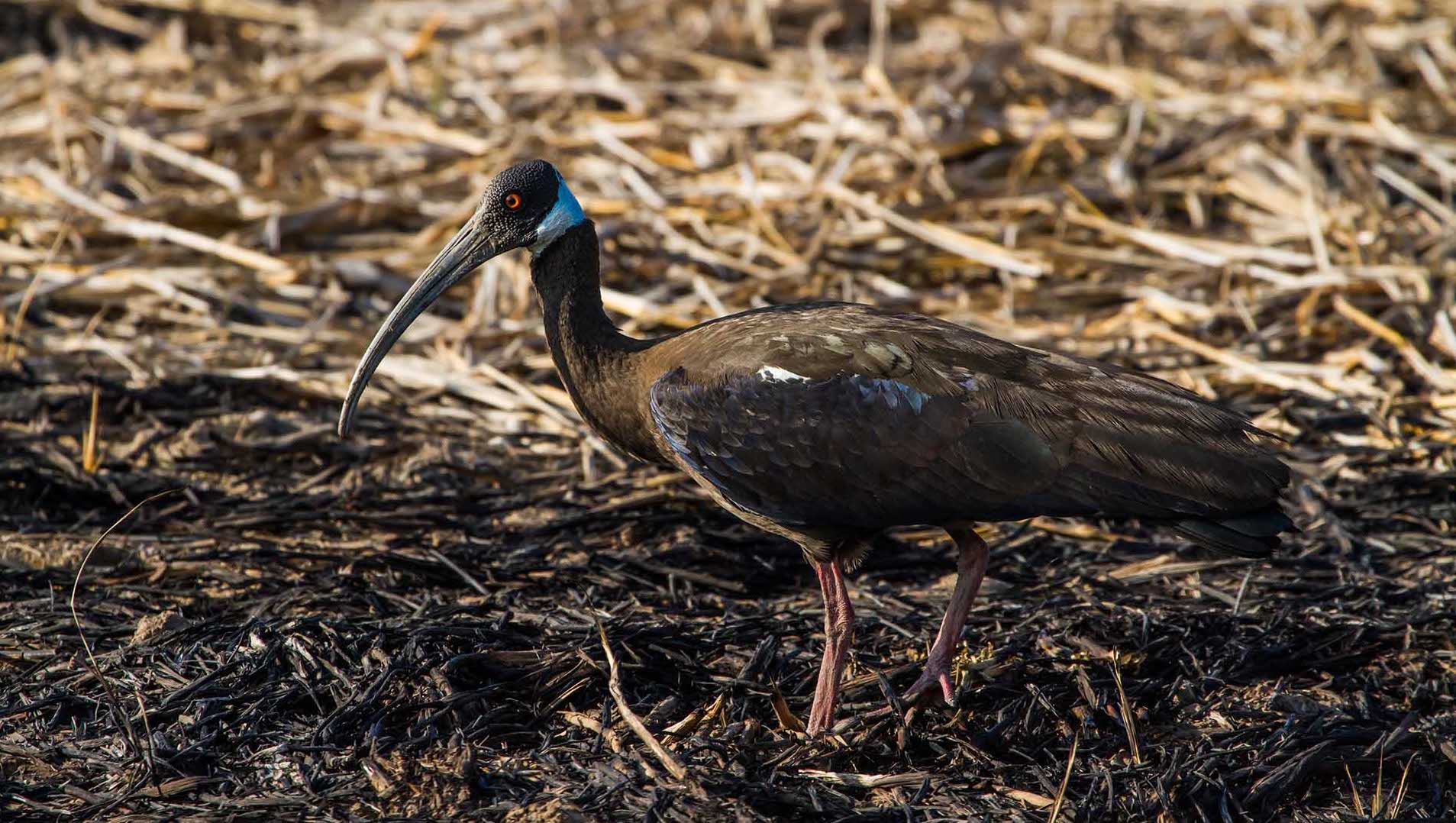Angkor Wat - Birding Cambodia



Tour Date:
Dec 7-12 2025. Mt Aural extension Dec 8-11.
Tour Price (Per Person):
Price to be announced with the new 6-day itinerary. Ballpark $2500/person in double occupancy. Includes transport, guiding from 7WB, local guides, and hotels. Hotel and dinners in Siem Reap are not included. All other meals are included.
Tour Type:
Easy birding and culture and birds at Angkor Wat. Highly targeted but easy birding for some of the rarest birds in SE Asia. A perfect trip for serious birders with little time, but short enough with spectacular species and a top-notch World Heritage Site for beginners or non-birding spouses/friends. Note the extension option if you have more time and have a good fitness level.
Description
UPDATE:
White-winged Duck has not been seen for a long time, so we have made changes in the program. We shall replace it with a site for Coral-billed Ground-Cuckoo instead.
The original program has also been amended with one additional day to include the spectacular Vulture Restaurants. More details on the birds we shall see will with these amendments will follow.
Birding Cambodia and Angkor Wat.
The fascinating Angkor Wat is the largest religious monument in the world, built as a Hindu temple in the early 12th century, but gradually transformed to a Buddhist Temple. It is the most important tourist attraction of Cambodia and obviously on many people’s bucket list. But there is also very good birding available nearby.
Our tour to Cambodia focuses on the unique birds and especially many Critically Endangered species such as Giant and White-shouldered Ibises and the many threatened Vulture species. We run this tour in cooperation with Sam Veasna Center for Wildlife Conservation – the prime conservation organization in Cambodia – with projects aiming to conserve threatened birds.
After the tour, there will be an extension Oct 25-28 to hike Mt Aural in the Cardamom Mountains for the endemic Cambodia Laughing-Thrush and several endemic subspecies that are potential splits.
DETAILED ITINERARY
Day 0. Arrival in Siem Riep.
Let us know your flight details and we shall recommend a hotel. Hotel (many options) and dinner not included.
Day 1. Bengal Florican Conservation Area and Tmatbeoy Eco Lodge.
We leave the hotel early with a prepared breakfast to go to Bengal Florican Conservation Area, the seasonally flooded grasslands of Kompong Thom and Siem Reap Provinces which contains the largest known population of Bengal Florican – over 50% of the world’s population.
There are several sites we visit that comprise important non-breeding grounds for many large water birds, such as Painted Stork, and Sarus Crane. Also found in this area are Pied and Eastern Marsh Harrier, Small Buttonquail, Blue-breasted Quail, Bluethroat and Red Avadavat, and it is potentially the largest single concentration of over wintering Manchurian Reed Warblers.
After lunch we drive to the Tmatboey Ecolodge with some roadside birdwatching for White-rumped Pygmy-Falcon and Collared Falconet.
Tmatboey is an isolated village located in Kulen Promtep Wildlife Sanctuary in the Northern Plains.
Tmatboey supports globally important breeding populations of two critically endangered Ibis species: the Giant Ibis – a near-mythical species for all bird-watchers, naturalists and conservationists – and the White-shouldered Ibis.
The area is a rich eco-system of open woodlands, seasonally inundated grasslands, deciduous dipterocarp forest and scattered wetlands. This landscape supports an unparalleled assemblage of threatened bird and mammal species and perhaps the richest remaining example of the characteristic deciduous dipterocarp forest.
The success of the project can be seen in the population increase in White-shouldered Ibis from a single breeding pair in 2002 to eleven pairs in 2016, and at the roost sites a steadily increasing number of individual adults are monitored annually. In September 2016, 38 individuals were counted, a number that could only be dreamt of when the project began over ten years ago.
The ecotourist project at Tmatboey has been recognized by Wild Asia and received the ‘Responsible Tourism Award 2007.’ In 2008 it was a joint winner of the Equator Prize for poverty reduction through sustainable use of biodiversity. We shall spend the rest of the afternoon with the help of local guides trying to locate the rare ibises. Owling at night could reward us with Oriental Scops Owl.
Overnight in Tmatboey Ecolodge.
Day 2: Tmatboey to Okoki and Chheb Wildlife Sanctuary. Giant Ibis and White-shouldered Ibis.
In the morning we shall have antother encounter with Giant and White-shouldered Ibis as well as Black-headed, White-bellied and Great Slaty Woodpeckers, Pale-capped Pigeon and Spotted and Brown Wood Owls.
We then retrieve ot the lodge for an early lunch and then set off to Okoki in the heat of the day.
In mid afternoon we arrive and should just have time to look for Critically Endangered White-winged Duck from one of the hides and we may see other birds that come to drink the water in the small pond for the late afternoon.
Okoki safari camp lies deep in the Northern Plains near the Lao border. In 2007 an exploratory expedition was undertaken by WCS to survey sites for White-winged Duck. Two pools (trapeangs) near the Okoki River were found to contain the duck during the dry season.
SVC, along with WCS developed a tented camp on the riverbank and tours had good success with the duck until 2013, when there was political instability in the area leading to closure. The site was closed for three years; however, it recently has been declared secure for tourism. A survey in May 2017 produced sightings of the duck and SVC is excited to reopen this camp for tourism.
Okoki creates an evergreen riparian corridor that winds through beautiful dry, deciduous forest. Gibbons and elephants still can be found along the river. Having two forest ecosystems to explore gives the visitor opportunities to enjoy a wide variety of birdlife.
The evergreen corridor provides shelter for Siamese Fireback, Banded Kingfisher, hornbills, broadbills, trogons and babblers. Both Bay Owl and Blyth’s Frogmouth have been recorded. The pools attract storks and even the occasional Giant Ibis. The open deciduous forest has White-rumped Falcon. Okoki has 17 species of woodpeckers.
Truly one of the great wilderness adventures in Cambodia, Okoki provides an amazing opportunity to experience a landscape that is fast disappearing across Southeast Asia.
After dinner then we can spend short time owling Oriental Bay Owl and Blyth’s Frogmouth.
Overnight in Okoki Safari tent Camp
Day 3: A full day birding at Okoki area. White-winged Duck.
Apart from White-winged Duck we shall look out for Bar-bellied Pitta, Banded Kingfisher and Scaly-breasted Partridge. As the Duck is very rare we wll need to allcoate as much time as possible for this species. We have a full day.
Overnight in Okoki safari tent camp
Day 4. Okoki back to Siem Riep
The last morning, we can still to go to the observation hide or looking around where they are feeding before we return back to Siem Reap. The driving back will be around five and half hours.
We plan to be at the airport around 5 pm. Hotel in Siem Reap and dinner not included. There are different comfort levels. Let us know how much you want to spend.
Day 5. Birding Angkor Wat.
Angkor Wat, the main attraction of the Angkor Archaeological Park is surrounded by mature dry forest and undergrowth, offering habitat for common species and the odd rarity: Oriental Darter in the moat, Hainan Blue, Taiga and Asian Brown Flycatchers, White-throated Rock-Thrush, Black Baza, Blue Rock Thrush, Forest Wagtail, Olive-backed Pipit, Greater Racket-tailed Drongo, Asian Barred Owlet, Coppersmith and Lineated Barbet, Ashy Minivet, Yellow-browed and Pale-legged Leaf-Warbler, raucous Red-breasted and Alexandrine Parakeets and White-crested Laughingthrush.
Mammals include Variable Squirrel and Pileated Gibbon. Your local guide – a qualified temple guide, brings together the wonders of Angkor with birding in the surrounding forest, a short distance from Siem Reap. Sunset can be enjoyed amongst the temples followed by dinner in town.
We shall be visiting the Bas reliefs, Taphrom Temple, Tanei temple, Bayon, Terrace of the Elephant, and Southern Gate of Angkor Thom City.
End of Service.
Extensions
For the recently described and endemic Cambodian Tailorbird, it can be found near the capital Phnom Penh. We can set you up with a bird guide and a driver if you want to do a twitch.
4-day trek for Cambodian endemics in the Mt Aural in Cardamon Mountains.
A trip to the mountain evergreen forest of Cambodia’s southwest holds one of the 2 endemic species found in Cambodia, the Cambodian Laughingthrush, as well as the near endemic Chestnut-headed Partridge, and we shall get the endemic Cambodian Tailorbird on our way to the mountains.
Some authorities have recently split the resident White-tailed Robin and the Blue-winged Minla (Siva) may be next. Both are found on Mt Aural. Aural is not for the faint of heart! It requires an arduous climb that requires a six hour climb for most willing participants. A few bang up in 5h. Local villagers will carry your bag, prepare food and set up camp. If you are not reasonably fit, this trek is not for you.
